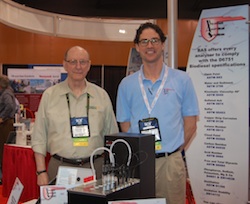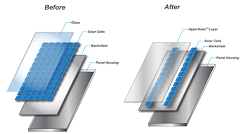The California Air Resources Board (CARB) is getting ready to move forward with determining the carbon intensity of crude oil. On February 17, they are holding a Low Carbon Fuel Standard (LCFS) Crude Oil Screening Workgroup Meeting. For those following the LCFS debate, you’ll note that still under fire is CARB’s final ruling on the carbon intensity levels given for ethanol and biodiesel. When CARB determined the original levels of corn ethanol, it essentially barred the fuel from qualifying as a low carbon fuel. While CARB has amended corn ethanol’s carbon intensity levels, basically allowing corn ethanol back into the marketplace, the amendment doesn’t take take effect until July 1 although LCFS took effect on January 1 of this year.
 Now it’s oil turn to be under fire. In California, 40 percent of the state’s fuel supply comes from TEOR petroleum, while 10 percent of the gasoline is blended with ethanol. Life Cycle Associates have found the value for Thermally Enhanced Oil Recovery (TEOR) to be at least 109, though it might approach 120, and to have a carbon intensity value of 20 for total production and transportation. Ironically, this is in the same ballpark as corn ethanol. They are critical of the original GREET model, which found the value to be much lower originally, near 96.
Now it’s oil turn to be under fire. In California, 40 percent of the state’s fuel supply comes from TEOR petroleum, while 10 percent of the gasoline is blended with ethanol. Life Cycle Associates have found the value for Thermally Enhanced Oil Recovery (TEOR) to be at least 109, though it might approach 120, and to have a carbon intensity value of 20 for total production and transportation. Ironically, this is in the same ballpark as corn ethanol. They are critical of the original GREET model, which found the value to be much lower originally, near 96.
The Western States Petroleum Association (WSPA) submitted a letter to CARB with their recommendations of how crude oil should be treated under LCFS. They believe that crude oils should not be differentiated. So oil produced from tar sands should be treated the same as oil drilled in Alaska. Second, they believe that “future production from the same geographical areas and using the same techniques as represented in the 2006 California baseline, are extensions of that baseline and should receive the same treatment.” In other words, new oil fields should not be subject to a screening process and this is important because the state is moving to open new TEOR oil fields that were once considered too uneconomical to extract the oil.
Third, WSPA is arguing that given that the regulations currently call for differentiation of crudes that are not included in the 2006 baseline into high carbon intensity crude oil (HCICO) and non-HCICO categories, WSPA has been working with staff and other stakeholders in the HCICO Workgroup to develop a process to make the necessary categorizations. Finally, once the categorizations are in place, they are asking for a retroactive application of the carbon intensity of re-classified crudes. Ultimately, WSPA offered up a proposed model for the crude oil screening process.
What the ethanol industry is lobbying for as a result of the meeting is that it will be determined that TEOR is required to be submitted to a full “Method 2B” carbon intensity determination, which opens the fuel pathway up to a thorough review including public comment.Read More








 In this edition of
In this edition of  Coleman has been involved with the ethanol industry for over a decade, most recently as Executive Director of the
Coleman has been involved with the ethanol industry for over a decade, most recently as Executive Director of the 



